Harold Davis's Blog, page 185
April 6, 2014
Apartments on the Boulevard Haussman
I was struck by the regularity in this apartment building. Nobody had planters out, no bikes were stored, and old shoes weren’t resting in the window embrasures. This kind of tidiness is what you might expect from the haute bourgeoisie along the Boulevard Haussmann in Paris. I photographed the facade to emphasize its evident symmetry, and processed it using the same set of techniques I used with Room with a View (where there were old sneakers outside the windows!) to make the image look as much like an etching as a black & white photo.

Apartments on the Boulevard Haussmann © Harold Davis
With the image I had pre-visualized, and in this kind of situation, in both shooting and processing I am very glad to have the monochromatic HDR toolkit at my beck and call!
Exposure data: Nikon D300, 18-200mm lens at 130mm, five combined exposures at shutter speeds between 1/13 of a second and 1/800 of a second, each exposure at f/8 and ISO 200, tripod mounted.

April 5, 2014
This way is definitely not the way
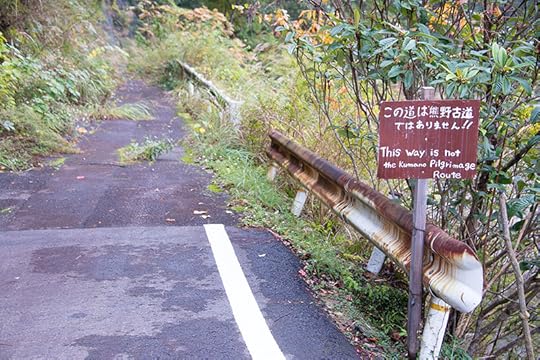
Not the Kumano Kodo © Harold Davis

Something Fishy
One of my favorite characters in fantasy literature, J.R.R. Tolkein’s Smeagol, would have appreciated the nice, plump and juicy slab of fish I brought back from the store. The fish meat rested on skin on the back, and the skin and scales glistened with a rainbow of pastel colors in the light. I knew I had to photograph the fish scales up close and personal.
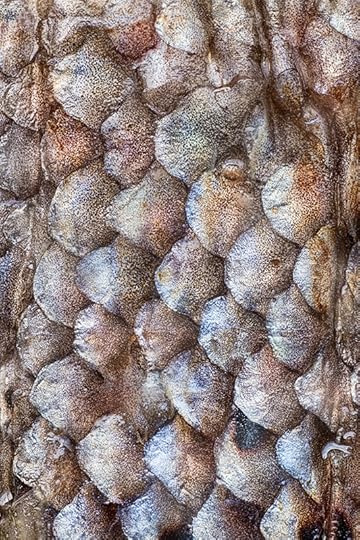
Scales © Harold Davis
I used my 85mm tilt-shift macro with a 36mm extension tube at an effective aperture of f/51 and an exposure sequence at ISO 100 from 1/8 of a second to 8 seconds. This is extreme close-up photography, with a magnification ratio of about 15:1, meaning you are viewing the fish scales fifteen times actual life size. Magnified this way, the fish scales look almost soft, and could be barnacles, or schools of fish themselves.
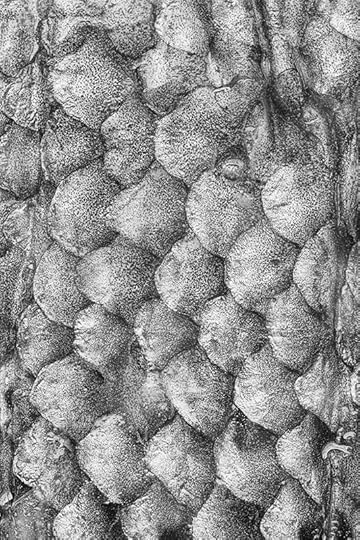
Fish Scales in Black & White © Harold Davis
Smeagol a/k/a Gollum would probably not have approved of my light source: directed sunlight (Gollum preferred dark caves, and the sun hurt his eyes). He also might have thought that the way it was prepared (by smoking) “ruined” my nice, plump and juicy raw slab of salmon. But I, to use Gollum’s vocabulary, thought my nice piece of smoked fish was “tasty” indeed—when I ate it after photographing it!

April 4, 2014
Nature’s Palette
Contrary to common cliché, the colors of nature are not always beautiful. But in the case of flowers, colors are almost always beautiful to human eyes. True, flowers need to attract pollinators to survive. But in a weird and wonderful example of species symbiosis, floral propagation is also largely dependent on attractiveness to humans. Nature has a number of stratagems here. For example, some floral species smell good to us. But when it comes to flower species survival and extension via human intervention, nothing beats nature’s glorious palette of floral colors!
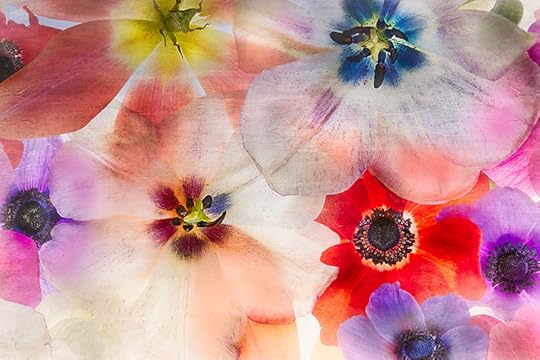
Nature’s Palette © Harold Davis
Related image: Tulips and Anemones.
Exposure data: Nikon D800, Zeiss 135mm f/2 APO Sonnar, 2 seconds at f/16 and ISO 100, tripod mounted.
Check out my online Photographing Flowers course (use this link for a $10 discount).
April 3, 2014
Zeiss Lens Ambassador – Harold Davis
I’m really pleased with my new page as a sponsored photographer on the Zeiss Camera Lens Ambassador site. Check it out: http://www.zeiss.com/camera-lenses/en_us/ambassadors/harold_davis.html.
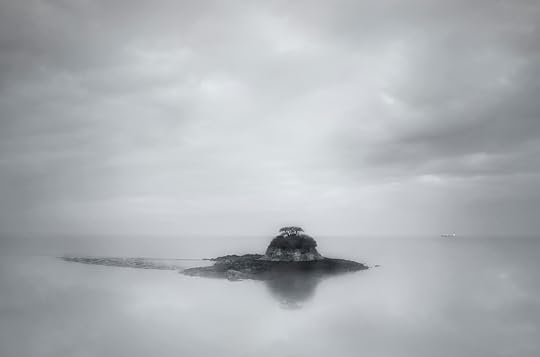
Lonely Islet © Harold Davis
Related link: Otus & me (an informal review).
April 2, 2014
Banks of the Seine
Using the same lens (my Zeiss 35mm) and the same camera-in-motion technique as In a Paris Park creates a moody and atmospheric image in monochrome of the banks of the Seine River and the Ile St-Louis in Paris. This could be an image from the dawn of photography—when long exposures were the norm, and it was difficult to get a crisp image in twilight—rather than a capture made with a state-of-the-art sophisticated DSLR.
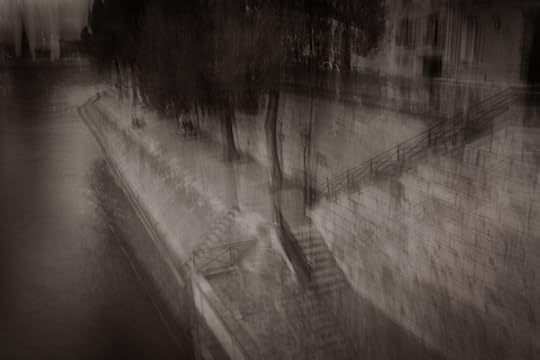
Banks of the Seine © Harold Davis
Exposure data: Nikon D800, Zeiss 35mm f/1.4 at f/8, 4 seconds at ISO 50, hand held.
Related image: Ile de la Cite from Ile St-Louis.

April 1, 2014
Sunday in the Park with George
Sunday in the Park with George. “George” in this case was my Zeiss 35mm f/1.4 lens. The park is Square Jean XXIII, just behind Notre Dame in Paris, on a cold November day near twilight.

In a Paris Park © Harold Davis
The most typical goal of photography is to render crisp images where camera motion is not an issue. This can be achieved by using a fast shutter speed—usually a shorter duration of time than 1/125 of a second—or by putting the camera on a solid support, such as a tripod.
What fun to turn this on its head by intentionally moving the camera during exposure. The results often don’t look very photographic, and it takes a good bit of trial and error to find the right exposure combination. It’s also easier when there is some light, but not too much light. Try this technique in the middle of the day, and even with loads of neutral density filters it is hard to get decent results.
As with the light, so with the motion—you want to move the camera in a consistent way, with enough movement to create an attractive effect but not so much as to turn the image to mush! In this case, “George” and I consistently panned slowly from left to right, pausing on the couple on the bench briefly, and going up and down at the right end of the exposure.
I feel lucky when shooting this way to get one out of a hundred shots turning out decently. Even a few seconds can seem like a very long time when one does it over and over again!
Exposure data: Nikon D800, Zeiss 35mm f/1.4 at f/4.5, 4 seconds at ISO 50, hand held.

March 29, 2014
Adventures in a higher key
I photographed these tulips on a light box using my normal shooting sequence, but when the time came to process them I did things somewhat differently.
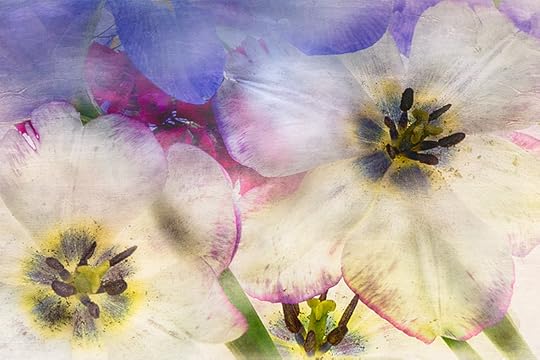
High-Key Tulips © Harold Davis
The normal workflow is to use a bracketed sequence of exposures (intentionally biased to overexposure) to create a high-key image, which is then processed for color, and then (if desired) texturized and placed on a background.
With this image, I began with a layered process for high-key transparency. I then departed from my usual practice by throwing away the background (almost white) layer. What remained was a partly transparent (literally so, in Photoshop) collage.
To continue, I replaced the bottom layer (formerly the background) with one of the textures from the Flypaper Textures new Paper Painterly collection. Well on my way to an exciting effect that combines the impact of digital painting and photography, I then applied a normal array of filters and adjustments to the image.
By the way, this makes a great and subtle print on Awagami Kozo washi. Very pleased with it!

March 28, 2014
French Gardens in Sepia
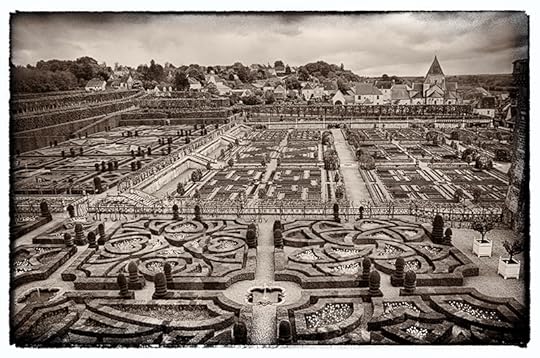
Villandry © Harold Davis
I was asked to prepare these monochromatic images of gardens in France with a slight sepia cast for possible use by an art world client. I like the way they came out—very mannered and apparently old-fashioned, but of course they are not old.
Once again, as I observed in Photographer as Poet, these images are creative anachronisms that combine a classic aesthetic with modern technique and ideas. There’s no need to analyze, however. The imagery can just be enjoyed for what it is. The fact that there is a deeper layer to the construction and thinking behind the imagery may interest those who like to think about issues of self-reference and meta-cognition, but should not interfere with straightforward visual enjoyment.
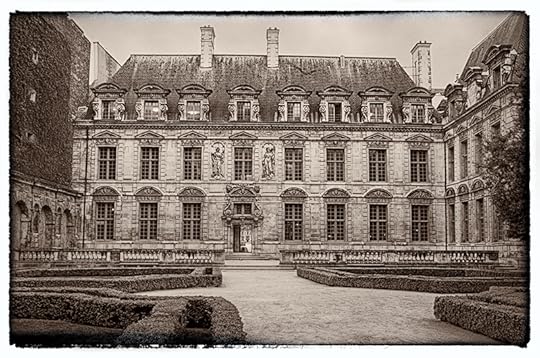
Hotel de Sully © Harold Davis

Parc de Sceaux © Harold Davis
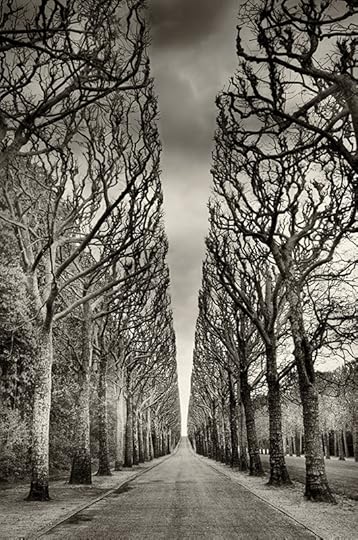
The Road Goes Ever On and On © Harold Davis

March 27, 2014
Hip to be square
An important part of the gentle art of photographic composition is to recognize that we are rendering a three-dimensional world, in part by presenting it within a two-dimensional frame. An effective composition makes some kind of order out of the chaos inherent in the world using this framing mechanism, and also through the references of elements within the image to the frame that limits the scope of the image. After all, complete freedom is inherently chaotic and anarchic, and the use of a photographic frame is one of the more obvious ordering mechanisms that is available to any photographer.

Special Tulips © Harold Davis
My use of the word “framing” here refers of course to the borders of an image (or print)—and not to the external frame that is put around or over a work of art. Our concept of “framing” derives from the shape of the image that the camera captures. This is very strong when you consider traditional film photography: a 35mm negative is framed in a 1.5 to 1 proportion, and a medium format negative is generally square.
With digital, there is less reason to be bound by the internal framing of the capture device. A photo can be cropped in many different proportions, with the only practical constraint the available resolution if one is “throwing away” pixels. You can even create images that extensions of the capture size, such as panoramas or David Hockney-style photo collages.
Personally, I’ve always enjoyed looking at square imagery, but it isn’t a compositional format that has come naturally to me. An art world client specifically asked me to create some square compositions from my flower photos, and I was pleased to see this work out with the image of Special Tulips shown above.
Botanique benchmark: I am excited and happy that a collector has agreed to buy the fifteenth copy of Botanique. This is the last copy that was priced at $1200, and the price is now $1950 for numbers 16-20. Thank you very much everyone who has supported this project, and a big shout-out to the original sponsors on Kickstarter (where pricing started at $600!).




